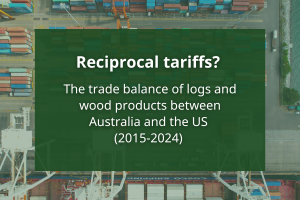Sales of sawn softwood timber in Australia recorded a new record in January 2015, of 170,109m3 for the month, 2.9% higher than January 2014 and the highest January sales since 2010. Underscoring the current strength of the domestic housing market, annual sales for the year to end of January 2015 were 2.550 million m3, rising for the seventeenth consecutive month.
On a year-end basis, sales in 2015 were 11.0% higher in January than for those in 2014.
The chart below, from the FWPA Data Dashboard, shows monthly sales and charts year-end sales.
Fig 14

For further details, go to the FWPA Data Dashboard.
The sales trend is strongly upwards and will continue to be so as 2014’s growing sales experience looks set to continue in 2015.
Statistics Count has previously addressed changing sales patterns within the overall sawn softwood sales. Essentially, the emphasis is towards higher value added products, especially those that are treated. However, as the chart below shows, other than the Appearance Grade, all softwood products experienced growth over the year-ended January 2015.
Fig 15

For further details, go to the FWPA Data Dashboard.
This data continues to provide clues as to the state and cycles of the domestic housing market and of course, its continuing strength.
Sales of H2F (treated structural pine) rose a large 20.6% year-on-year to be 520,232 m3 for the year to end January 2015. The more traditional untreated grade, Structural less than 120 still holds the largest share of sales, growing 6.6% to 782,181 m3 over the same period.
The purchase of sawn timber for constructing dwellings is thus continuing apace, as are the efforts to make already built houses more attractive. Sales for Fencing grade sawn timber rose 35.6% for the year to end January 2015, and Landscaping grade sales were up 21.2%. Sales of Poles were similarly up 19.9% over the same period.
Not typically related to housing and more likely to be linked to the food and industrial sectors, the sale of Packaging grade sawn softwood rose a solid 10.8% to reach 419,116 m3.
Anywhere you care to look, there is increased sales and utilization of sawn timber in the Australian economy, but the mainstay remains the state of the domestic housing market.



